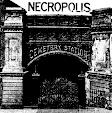ON THE FIRST NIGHT OF HALLOWEEN … I have returned once again for another 31 Nights of horror movies!! As before, I intend to (1) watch well-regarded horror movies I’ve never seen before and (2) write about them. However! This year I’ve further selected things based on a theme … which is:
TWISTED TWINS & DUPLICITOUS DOPPELGÄNGERS
Why do so many horror stories involve human doubles, whether via natural siblings or unnatural shapeshifters? What is it that we find so frightening about others wearing our faces? In attempting to provide some novel answers, I’ll start with some of the more obvious choices that explicitly explore this theme. Then, I’ll make my way to the much less obvious—since it is my hypothesis that almost every horror movie is on some level obsessed with duplicates.
So, to begin … I watched The Other (1972), directed by Robert Mulligan and written by Thomas Tryon, based on his 1971 novel of the same name. It takes place over the course of an eerily idyllic summer in the 1930's, on a *highly* accident-prone Connecticut farmstead. The sprawling farmhouse here is home to multiple generations of the Perry family. This includes a mystical old-world Russian grandmother; her neurotic widowed daughter-in-law (played by Diana Muldaur, best known as Star Trek’s Dr. Pulaski); her middle-aged son and his staff; and her adult grandson (played by a young John Ritter), with his swelling pregnant wife and their prepubescent boy. The main characters we follow throughout, though, are the widow’s ten-year-old identical twin sons, Niles and Holland (serviceably played by real-life twins Chris and Martin Udvarnoky).
Well, sort of.
To the modern viewer, it’s immediately obvious that something is very odd about Holland. He’s never shown in the same shot with Niles. He’s also constantly whispering to his brother from the shadows, encouraging him to do naughty things like rob a signet ring from his own father’s corpse (along with the rotting finger it was stuck on). Meanwhile, most of the Perry family members never mention or address Holland, only Niles. To throw us off, several scenes feature Niles discussing Holland with his grandmother, wherein she seems to recognize Holland as a regular living human. But this is hardly a convincing red-herring, given that these scenes also involve the grandmother teaching Niles some form of astral projection folk-magic that she has invented, called “the game.”
About an hour in, our suspicions are confirmed: while Holland was in fact Niles' twin brother, he died a few months prior to the opening. Now, either Niles is being haunted by his brother’s malevolent spirit, or Holland’s death caused Niles’ psyche to split into angelic and demonic halves. Niles’ grandmother believes it is the former, such that she blames herself for teaching Niles to astral project and thereby somehow inadvertently raise the dead. But the family history of mental illness, represented by Niles’ mother’s bed-ridden fugue-state over the deaths of her husband and son, lends more weight to the latter interpretation.
In any case, “Holland” turns out to be quite the precocious serial killer. Inspired by a magic show he sees at a carnival sideshow, he carefully stages his murders as plausible accidents. A pitchfork happens to be left in the hay loft in just the right position so that his annoying older cousin who enjoys jumping into the hay is impaled. A nagging old woman neighbor dies of a heart attack at the sight of rat. The handyman is seen leering at the window just before a new-born baby is stolen in the night.
Thus, as we will find in many horror movies revolving around twins, the plot turns on central twist. Here, though that twist is fairly obvious from the beginning, The Other effectively creates a creeping sense of broken reality that is chilling even under the golden summer sun. Moreover, I think it succeeds *because* the twist is obvious. On my first viewing, I could already notice and appreciate the strange inconsistencies surrounding Holland’s appearances. This works more in favor of The Other’s haunting nostalgia than a truly surprising head-flip would have, I think.
Back to our theme: The Other surely falls in the category of horror movies that are explicitly and emphatically obsessed with double identity. Not only is the film about an identical twin whose brother is at once his imaginary friend, his own shadow self, and a ghost, but furthermore, in narrative and structure it goes out of its way to include many other forms of doubling. Two young boys die by accidental falls while playing, and two older women fall down stairs as a result of Niles’ actions. Niles has two deranged mystical mother figures, the grandmother has two grown children, and the young couple has a second child on the way. Finally, the climactic theft and murder of an infant is doubly presaged by textual references. First, a headline in the newspaper at the breakfast table concerns the then-current Lindbergh baby kidnapping saga. (“Christ, it’s the Lindbergh thing all over again,” one of men in the search party later declares, in case we forgot.) Second, Niles twice recounts to his mother a fairy tale about elves stealing a baby and replacing it with a changeling-- which his mother seems unusually horrified by, as it both reminds her of her own loss of a child and foretells the impending climactic murder by her son.
All of these doublings surrounding the central pair work to produce a funhouse maze of redoubled reflections. The final shot leaves us lost in an eerie mental state of illusion mirroring Niles’ disassociated consciousness.


No comments:
Post a Comment